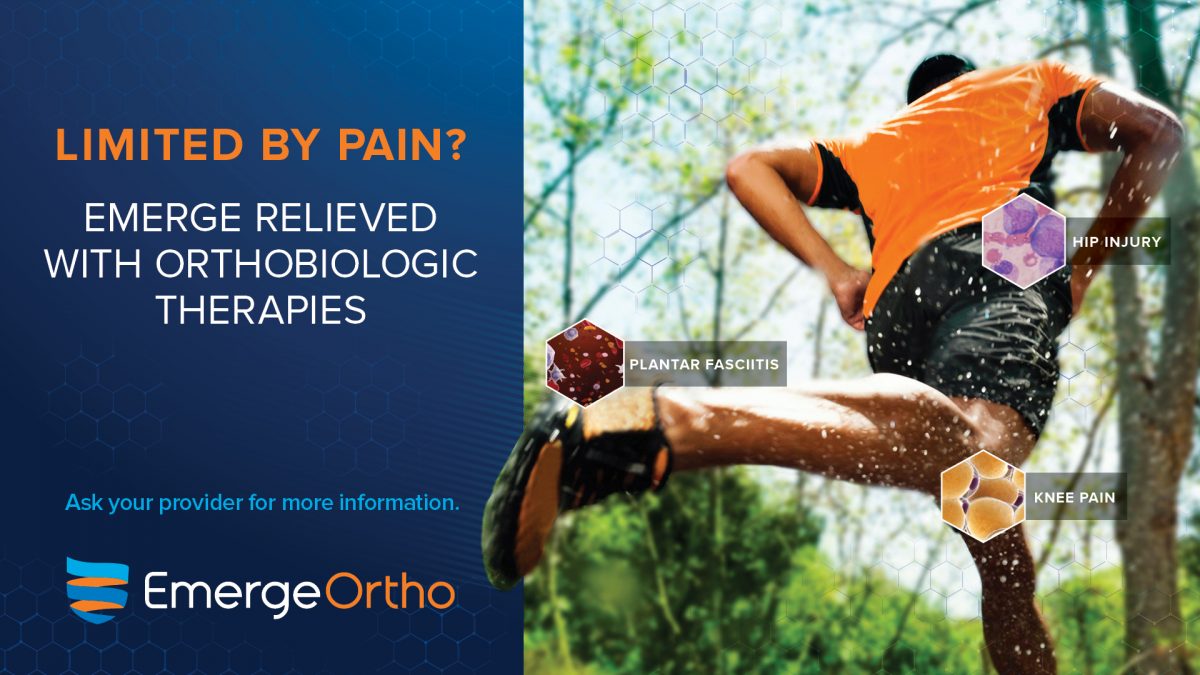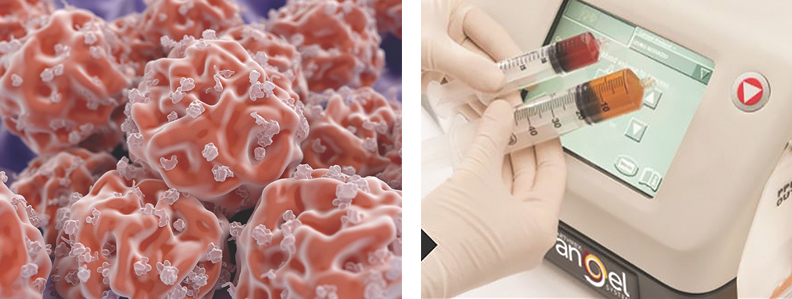
Over the past decade, one of the most exciting developments in the treatment of acute and chronic orthopedic pains and traumatic injuries is orthobiologic injections. A leader in this expanding new field, EmergeOrtho offers a wide range of orthobiologic treatments and will soon begin recruitment for our own research, specifically on the effectiveness of platelet rich plasma (PRP) injections and adipose stem cell injections for chronic arthritic conditions of the knee.
What Is Orthobiologics?
The term orthobiologic refers to treatments of orthopedic injuries – those affecting joints, bones or support structures to the skeleton – combined with a biologic treatment, which, in this case, means a cellular-level treatment with human tissue.
At EmergeOrtho, we currently offer three types of orthobiologic injections, each directed at specific types of injuries and arthritic changes. These treatments include PRP injections, concentrated adipose stem cell injections, and concentrated bone marrow aspirate injections.

Orthobiologic injections for the treatment of acute and chronic pain.
When Are Orthobiologic Treatments Indicated?
At this time, the most frequent use of adipose and bone marrow stem cell injections is into a joint, either before or after a surgical procedure. As evidence of effectiveness increases, however, orthobiologic procedures are becoming an alternative for patients who are not candidates for surgery or who desire a minimally invasive option other than surgery. [1]
For example, while total knee replacement is a very successful procedure for severe arthritis of the knee, it is a major operation and the recovery can take several months. Furthering, some patients may not be candidates for surgery, and orthobiologics may enable us to reduce their pain, improve their function and potentially delay or eliminate the need for total joint replacements. [1]
Using the body’s natural healing potential in a concentrated and precisely delivered fashion has been shown to amplify the recovery process after both acute and chronic injuries. PRP, for example, has been used for more than 15 years at multiple sites throughout the body, including the spine, shoulder, elbow, wrist and hand, low back, hip, knees, ankles and feet. [2] There is increasing evidence to encourage the use of PRP injections in ligament, tendon, meniscus and soft tissue injuries, including tendinitis and tendinopathy. [3]
Learn More
Because orthobiologic treatments harness the body’s natural healing and reparative potential, the future of orthopedic treatments may be able to customize and individualize therapies based not only on the injury, but also the individual’s own healing abilities.

__________________________
[1] The Orthopedic Journal of Sports Medicine, 5(2), 2325967117690131
Genes 2017, 8, 270; DOI: 10.3390 / genes 810-0270 www.mdpi.com/journal/genes
[2] Koh, YG; Arthroscopy: the Journal of Arthroscopic and Related Surgery: Mesenchymal Stem Cell Injections Improve Symptoms of Knee Osteoarthritis; 2013: page 1-8
Shapiro, S; A Prospective, Single- Blind, Placebo- Controlled Trial of Bone Marrow Aspirate Concentrate for Knee Osteoarthritis; the American Journal of Sports Medicine, volume 45, number 1, page 82-90
[3] Vangsness Jr., CT; Adult Human Mesenchymal Stem Cells Delivered via Intra-articular Injection to the Knee Following Partial Medial Meniscectomy; Journal of Bone and Joint Surgery; 2014; 96: 90-8
J. Borg-Stein et al. Regenerative Sports Medicine: Past, Present, and Future; PMR 10 (2018) 1083-1105
Supplement 2 PM&R volume seven, issue 4S, April 2015; Physiatric Applications of Stem Cell Therapies in Regenerative Treatment of Musculoskeletal Conditions





